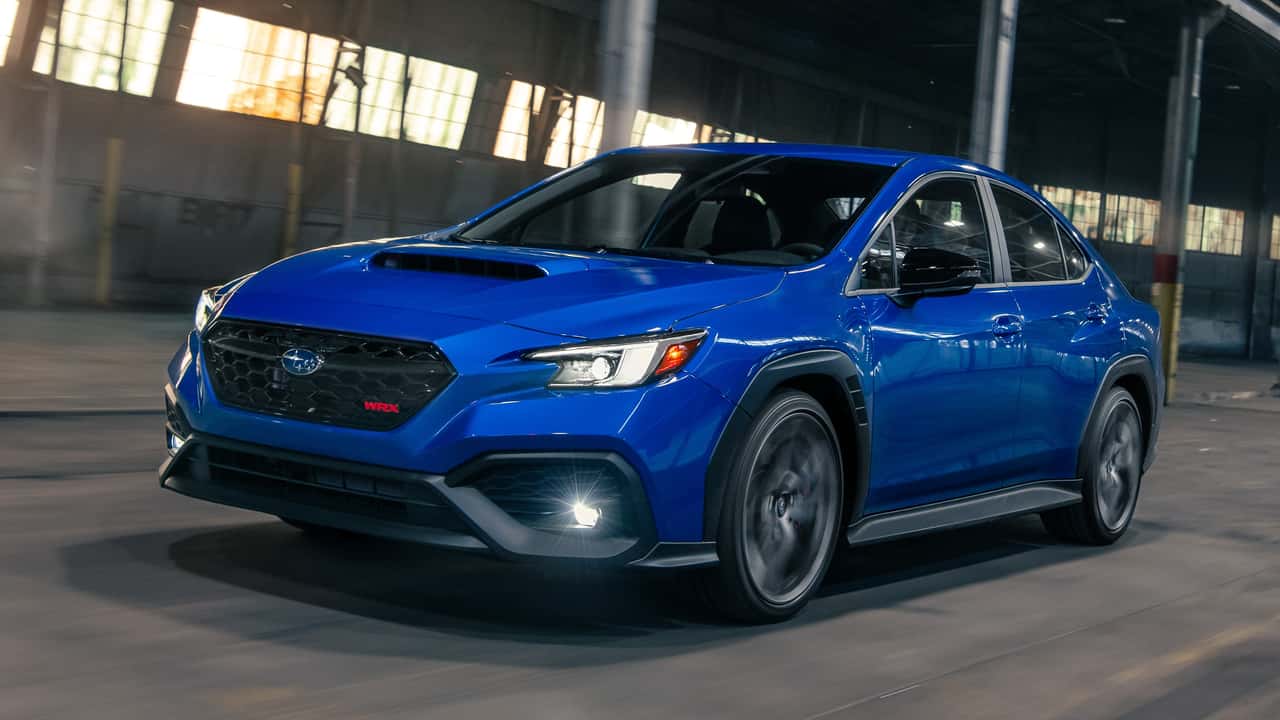The launch of the Subaru WRX tS variant was marked by a sense of nostalgia, especially for enthusiasts lamenting the absence of a full STI model in the U.S. market. This fifth-generation WRX emphasizes handling and chassis dynamics over raw power, with performance figures that are nearly identical to those of the original WRX from 2002. While the model is limited to a 271-horsepower turbocharged flat-four engine, it still provides driving enthusiasts the thrill of a traditional six-speed manual transmission, a hallmark of the WRX brand.
A significant highlight of the WRX tS is its impressive manual transmission take rate, reported at 83 percent for this year, as noted by Kelley Blue Book and confirmed by Car and Driver. This figure positions the WRX as a leader among new vehicles offering manual gearboxes, surpassing even renowned performance cars like the Porsche 911 GT3, which recorded a manual take rate of 46 percent. In comparison, more affordable sports cars like the Toyota GR86 and Mazda Miata have lower manual adoption rates, with 40 and 60 percent, respectively, further solidifying the WRX’s unique appeal among enthusiasts.

The high take rate for the WRX’s manual transmission can be partially attributed to the less appealing alternative: the continuously variable transmission (CVT). While competing models, such as the Hyundai Elantra N, offer a choice between a manual and a sophisticated eight-speed dual-clutch automatic, the WRX’s CVT is less engaging for performance-minded drivers. Although the CVT matches the manual in terms of acceleration metrics, it lacks the visceral driving experience that comes with a traditional gearbox, leading many enthusiasts to choose the manual option.
Despite the limitations of the current WRX powertrain, there is hope for a future STI model that could offer a more potent engine, potentially boosting horsepower significantly beyond the current figure. Subaru seems focused on refining the WRX experience rather than investing in a dual-clutch option, which may ultimately be better allocated towards enhancing the performance of the WRX and its prospective STI variant. Enthusiasts eagerly await developments that could lead to a more powerful, performance-oriented WRX.
In the absence of an STI model, the WRX remains a strong contender in the sports compact segment, appealing to buyers who value its combination of all-wheel drive, added horsepower, and the engaging driving experience provided by a manual transmission. Priced similarly to the Civic Si, the base WRX offers a compelling package that emphasizes performance. As competitors like the 2025 VW GTI move away from offering manual options, WRX buyers are likely to play a key role in preserving the legacy of manual driving, ensuring that the essence of driving remains integral to the WRX identity.

